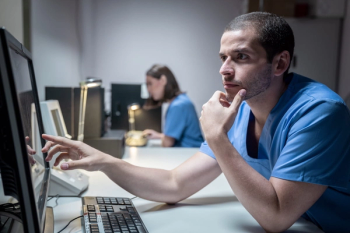
Using AI Could Improve Chest Imaging with COVID-19 Patients
Johns Hopkins Medicine researchers see “untapped potential” for artificial intelligence tools.
Artificial intelligence (AI) could be used to expand the role of chest CT during the COVID-19 pandemic, according to researchers at Johns Hopkins Medicine.
In a recent study published in
“Artificial intelligence has the potential to expand the role of chest imaging in COVID-19 beyond diagnosis to enable risk stratification, treatment monitoring, and discovery of novel therapeutic targets,” the team wrote. “AI’s power to generate models from large volumes of information – fusing molecular, clinical, epidemiological, and imaging data – may accelerate solutions to detect, contain, and treat COVID-19.”
To date, chest CT has not been promoted as an appropriate modality for diagnosing COVID-19 patients, but it has proven useful in excluding other possible causes for COVID-19-like symptoms, confirming a previous diagnosis, or monitoring patient progress. But, there’s room for AI to do more, the team suggested.
There is an “untapped potential” for AI to be used for:
- Risk stratification, effectively categorizing patients for the type of care they receive based on the predicted course of their COVID-19 infection.
- Treatment monitoring to define the effectiveness of agents used to combat the disease
- Modeling how COVID-19 behaves to support the development, testing, and deployment of novel, customized therapies
Even though AI systems must be carefully designed, validated, and deployed, they can play a critical role in the further understanding of – and clinical work surrounding – COVID-19.
“AI provides a prime opportunity for ‘data fusion’ of lung pathologic information with immunological information, especially on mapping the respective trajectories during hospitalization,” they wrote. “In the future, AI may help identify the immunological markers most associated with poor clinical course, which may yield new targets for immune modulation in therapeutic trials.
Newsletter
Stay at the forefront of radiology with the Diagnostic Imaging newsletter, delivering the latest news, clinical insights, and imaging advancements for today’s radiologists.



























